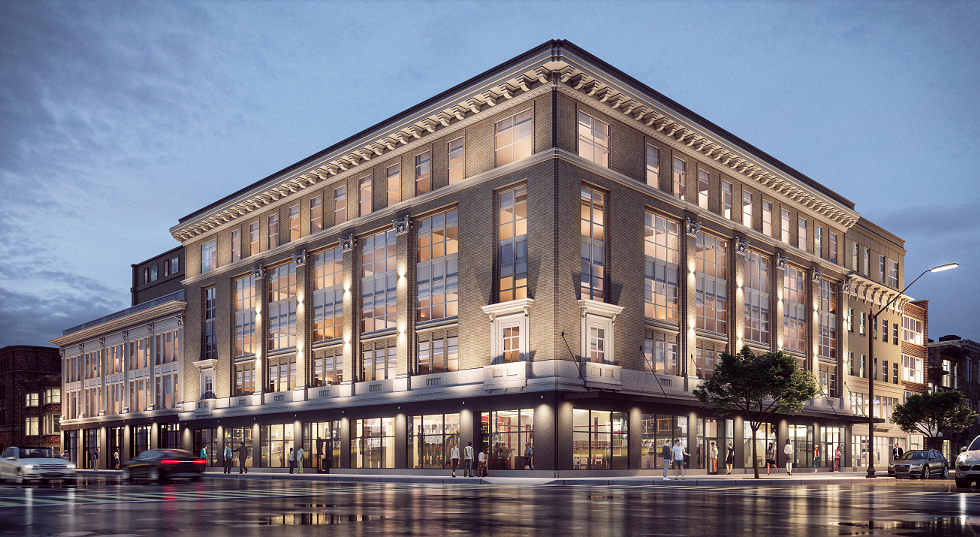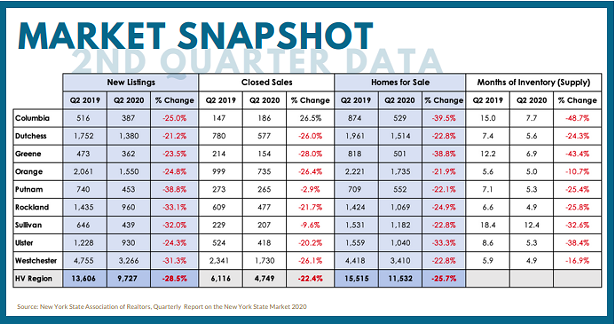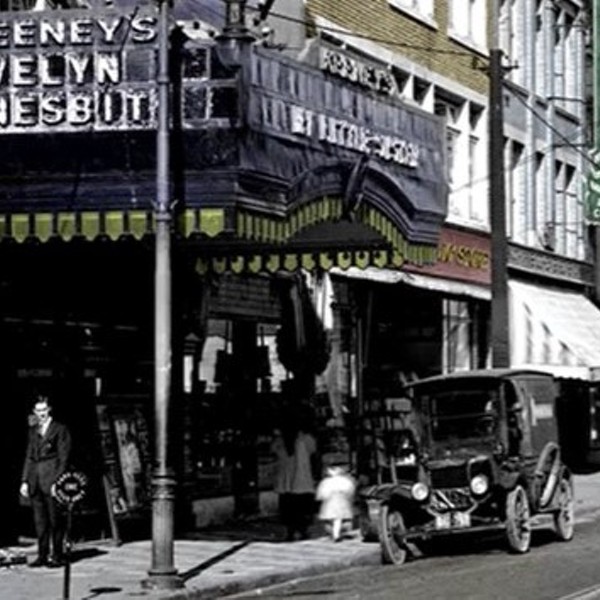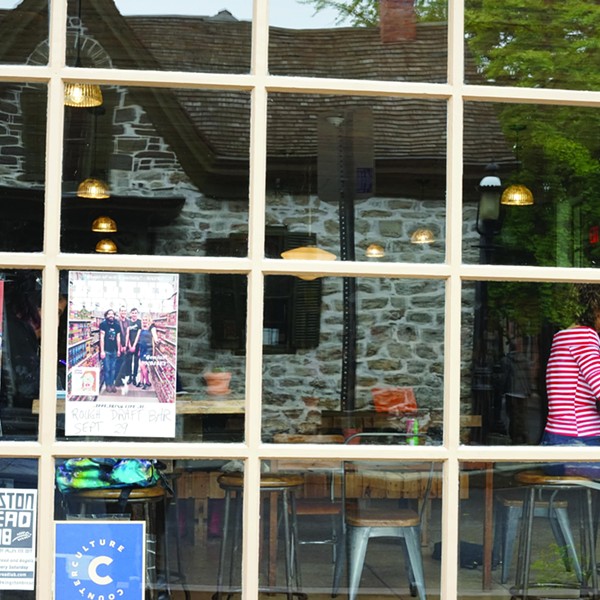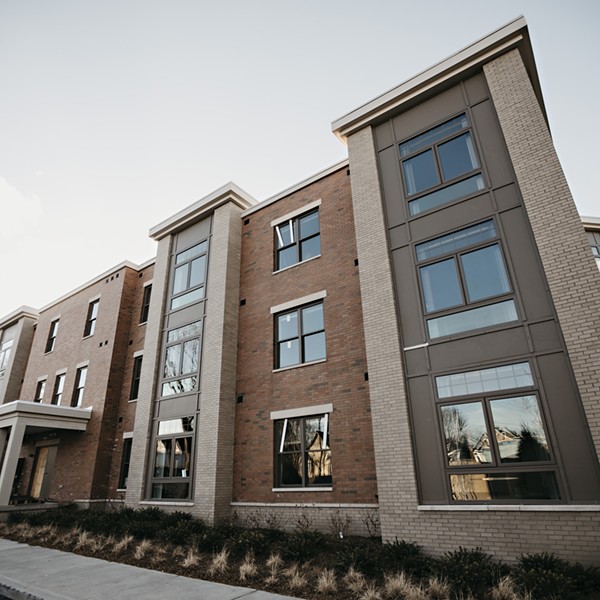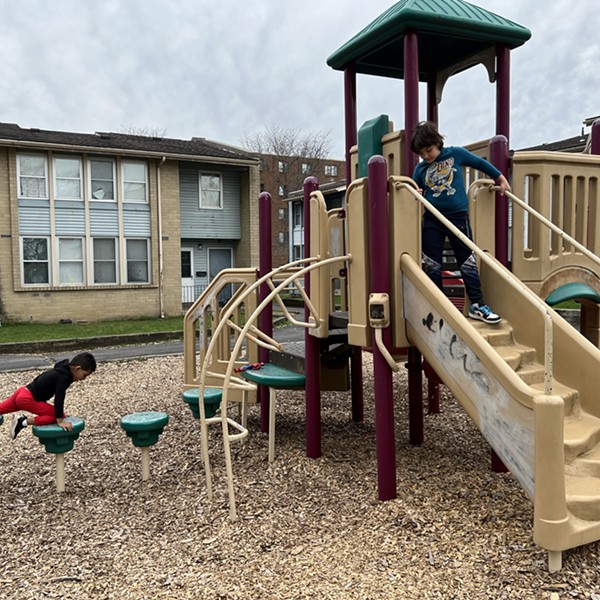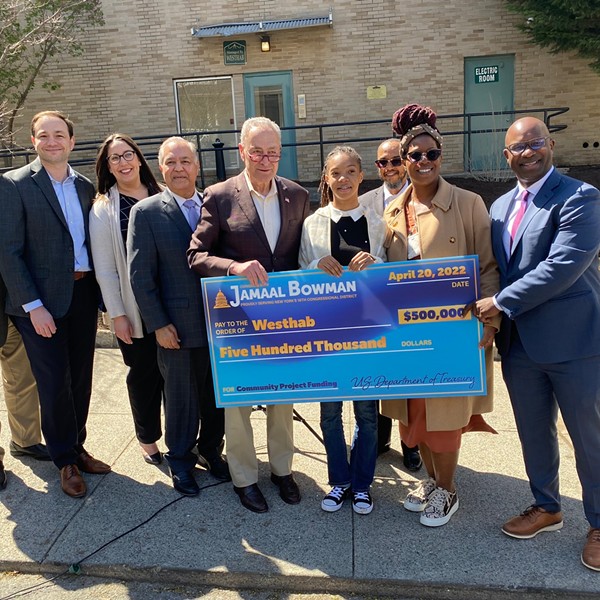In February of this year, a group of investors purchased the Luckey Platt Building in downtown Poughkeepsie. Once a thriving department store, the 1920s Classical Revival structure had lain vacant for a quarter of a century before it was converted into a mixed-use complex with 143 apartments in 2008. Today, the building is getting yet another lease on life as the investors, known as Luckey Platt Owners LLC, set out to renovate its units into luxury apartments aimed at attracting young professionals. For the building’s longtime residents, many of whom are people are color, this means unaffordable rents and impending evictions.
The Lucky Platt Building is not an isolated case. Looking to capitalize on the growing interest from New York City, which has been exacerbated by the pandemic, developers are raising rents—and pricing out longtime residents. In cities like Poughkeepsie, where 98 percent of the apartments were occupied last year, residents are left with very few affordable alternatives.
This pattern repeats itself throughout the Hudson Valley. As evidenced by three separate reports released this summer, home values throughout the Hudson Valley are on the rise, the number of households with financial struggles is increasing, and the affordability gap is growing wider. The Hudson Valley is going through an affordable housing crisis, and the problem isn’t new.
“We had an affordable housing crisis before the pandemic,” says Jonathan Drapkin, president and CEO of Pattern for Progress, a Newburgh-based research and public policy nonprofit that released The Hudson Valley Regional Housing Market Report this summer. A product of Pattern for Progress’s Center for Housing Solutions and Community Initiatives, the report spans the past four years and focuses on single-family condos and town homes on the sales market. It suggests that the majority of the Hudson Valley region is now in a strong seller’s market, where lower inventory and high demand create a strong upward pricing pressure, which leads to increased home values.
Inventory is a critical indicator for the housing market. The real estate industry considers six months of inventory a balanced supply. Less than that is considered a seller’s market; more than six months is a buyer’s market. At the end of the second quarter in 2020, the majority of the Hudson Valley region had less than six months of inventory available for potential buyers.
The report suggests that this decline in housing supply isn't an entirely new phenomenon. In 2017, which is as far back as the report goes, there were 16,360 available homes in the Hudson Valley. This year, the number has fallen to 11,532, a decline of nearly 30 percent. According to Joseph Czajka, a housing expert and senior vice president at Pattern for Progress, one of the main drivers for a lack of affordable housing in Hudson Valley lies right here in the supply issue. “Not enough is being built at the price point workers can afford,” he says. This mismatch is exacerbated by construction costs, which were already on the rise before the pandemic landed a blow to the supply chain.
The Dreaded “G” Word
For 36 years, affordable housing provider RUPCO has been providing quality, affordable housing and community developments programs across the Hudson Valley. Today, RUPCO owns or manages 22 buildings across the region and 586 units of affordable housing, with more than 120 units in construction and several hundred in the pipeline. “This is the second time in the past two decades where we’re seeing development pressure and the cost of housing rise significantly because of demand,” says Guy Kempe, the agency’s vice president of community development. The first wave was the New Yorkers who moved to the Hudson Valley in the aftermath of 9/11. The pandemic, he says, has brought a second wave of demand, and “it’s causing our communities to become a tad frayed.”
Since the start of the pandemic, cities like Kingston have found themselves on the receiving end of a pandemic-fueled exodus from New York City, but already, the city’s housing supply was low. Kempe cites E&M Properties, the real estate investment and management company that purchased several multifamily projects in and around Kingston last year, cut services, raised rents, refused to renew leases, and started eviction proceeding against tenants. “The housing supply that we counted on, which was casually part of the affordable housing supply, is disappearing,” he says.
Across the region, affordable housing complexes all have waiting lists ranging from two years to as long as five years. Data from the National Low-Income Housing Coalition’s “Out of Reach” report, which was released in July 2020, shows that renters' wage rates are not keeping up with housing costs, and that the production of affordable rental housing has not kept up with the demand.
Mandatory inclusionary zoning rules could help meet that demand, and prevent investors like Luckey Platt Owners LLC from pricing out longtime residents by providing affordable housing options in the building’s redevelopment. When new residences are built, inclusionary zoning requires private developers to provide a certain percentage of units in a given project for less than their market value.
Inclusionary zoning already exists in Beacon (344 Main St) and New Rochelle (The Hammel Building), but as demand outweighs supply, anti-poverty advocates believe that the policy is an incomplete, temporary fix that doesn’t address the needs of low-income communities. For example, if a community needs 500 affordable rentals and 10 percent of units are set aside as affordable, then that community—and the developers involved—must up the minimum percentage of affordable units, or allow for 5,000 new units. “Not likely to happen,” says Czajka from Pattern for Progress. Instead, zoning changes could allow for smaller lots and smaller homes. Czajka also proposes taxed phase-ins for first-time homebuyers, who would see their taxes raised over a period of five or 10 years.
Another idea would be to design developments with a mix of income levels ranging from households earning 50-60 percent of area median income (AMI) to over 120 percent. “This would mitigate the concentration of poverty and warehousing of low-income families,” says Czajka. On Main Street in Poughkeepsie, for example, the Queen City Lofts—a mixed-use, mixed-income and artist housing development—offers 50 affordable artist lofts and 20 middle-income lofts coupled with amenities that include a boutique fitness gym and rooftop restaurant. A similar development on Main Street in Beacon, the West End Lofts, provides 50 affordable artist lofts, 21 middle-income units, and 25 market-rate units.
Such developments want to spur revitalization by drawing more painters, musicians, poets, and other income-eligible artists to build the “creative city” proffered by American urbanist Richard Florida. But as a result, cities like Beacon, Hudson, and Kingston are faced with housing shortages, polarized prosperity, and gentrification.
“Gentrification is not new to the Hudson Valley,” says Kempe. “In fact, gentrification here has taken place in ways that relate back to colonial era and the displacement of indigenous people who lived in the Hudson Valley, and to urban renewal sponsored by the government.” Kempe is referring to President Johnson’s Great Society programs in the 1960s, which he says created islands and large pockets of poverty. Today, he says, displacement is mostly caused by market forces like supply and demand.
“Municipal governments are challenged to address this, and there are some strategies available to them,” he adds. For example, municipalities can continue what cities like Kingston, Newburgh, and, as of September, Poughkeepsie, have already started doing: Establish a local land bank that would acquire, rehabilitate, and resell bank-owned and municipal-owned property by converting abandoned and vacant properties into affordable housing.
As Czajka suggests, other solutions also involve accessory dwelling units for seniors wanting to downsize and college grads starting out (this would give the owner a revenue stream), or even continuing to repurpose existing buildings for housing, like RUPCO’s Landmark Place currently under construction in Kingston, which repurposes the Kingston City Almshouse to create 66 affordable rental housing units for seniors.
Housing Is a Right, Not a Criteria
By definition, housing is considered affordable when it doesn’t consume more than 30 percent of a household’s income. But the number of people who meet the income eligibility criteria generally exceeds the number of units available. And for every low-income family that qualifies, there is a family that doesn’t but still needs the support. This is where the ALICE project comes in.
In 2019, the federal poverty threshold was at $13,000 a year for one person, and just over $26,000 for a family of four. This means that while 8 million Americans have slipped below the poverty level since the pandemic, millions more live just above that line, still facing significant hardship. ALICE, which stands for Asset Limited, Income Constrained, Employed, strives to quantify and describe those households that are not typically captured by traditional measures of poverty.
An initiative of the nonprofit organization United Way, the ALICE Project report from August 2020 shows that the percentage of households in the Hudson Valley below the ALICE threshold (in New York State, that’s an annual income of $78,156 for a household of four) has increased from 35 percent in 2010 to 39 percent in 2018. Within the Hudson Valley, Greene County experienced the largest increase, jumping from 42 percent in 2010 to half its population in 2018.
In all nine counties of the Hudson Valley, childcare appears as the highest cost for households with two children: the highest being in Putnam, Rockland, and Westchester, where the monthly childcare budget ranges between $2,500 and $3,000. And since the region’s population is already aging, a demographic shift that sees families delaying or forgoing having children due to childcare costs may have significant economic and social implications.
Families under the ALICE threshold are particularly vulnerable to financial stressors like unexpected expenses, a job loss, or COVID-19. “ALICE households include our Essential Workers, the people who fix our cars, check us through the grocery store register, repair our roads, and take care of us when we are sick,” the report says. “We count on these people every day.”
To help curb displacement, Kempe thinks that economic and commercial development can borrow a line from shovel-ready projects—a term popularized by Barack Obama in late 2008 to describe sites that have infrastructure in place such that with sufficient funding, construction could be begin within a very short time. Kempe says the idea usually relates to systems like wastewater treatment or stormwater conveyance, but if applied to affordable housing, it could help provide more of it, and faster. “I don’t know any community that’s taken that progressive a view,” he says. “It could work in every city in the Valley right now.”







